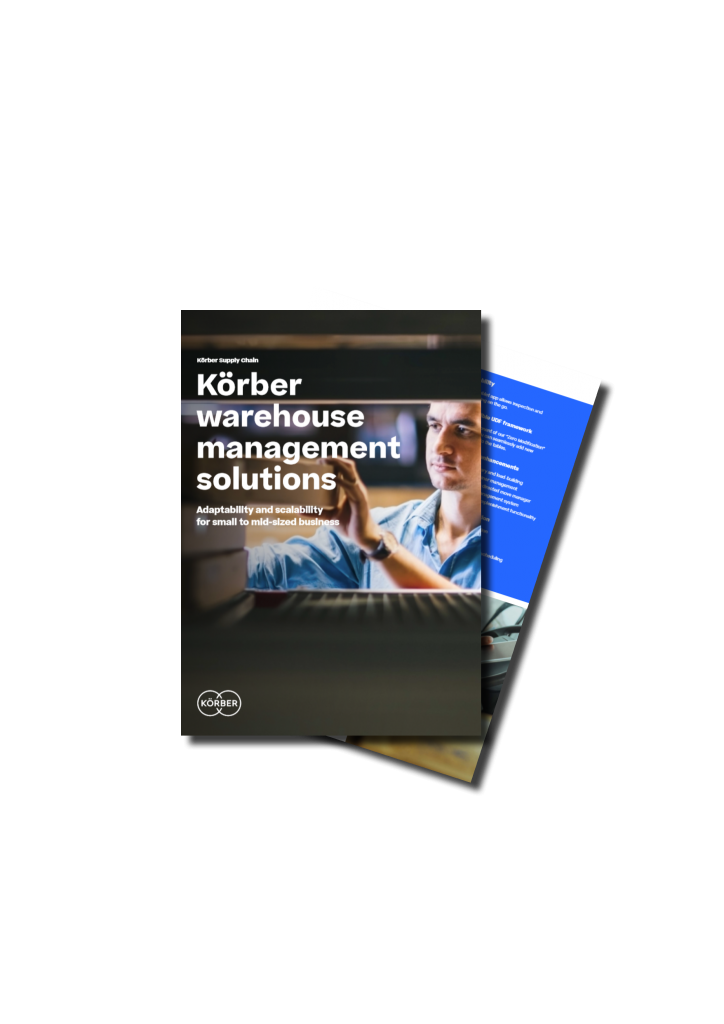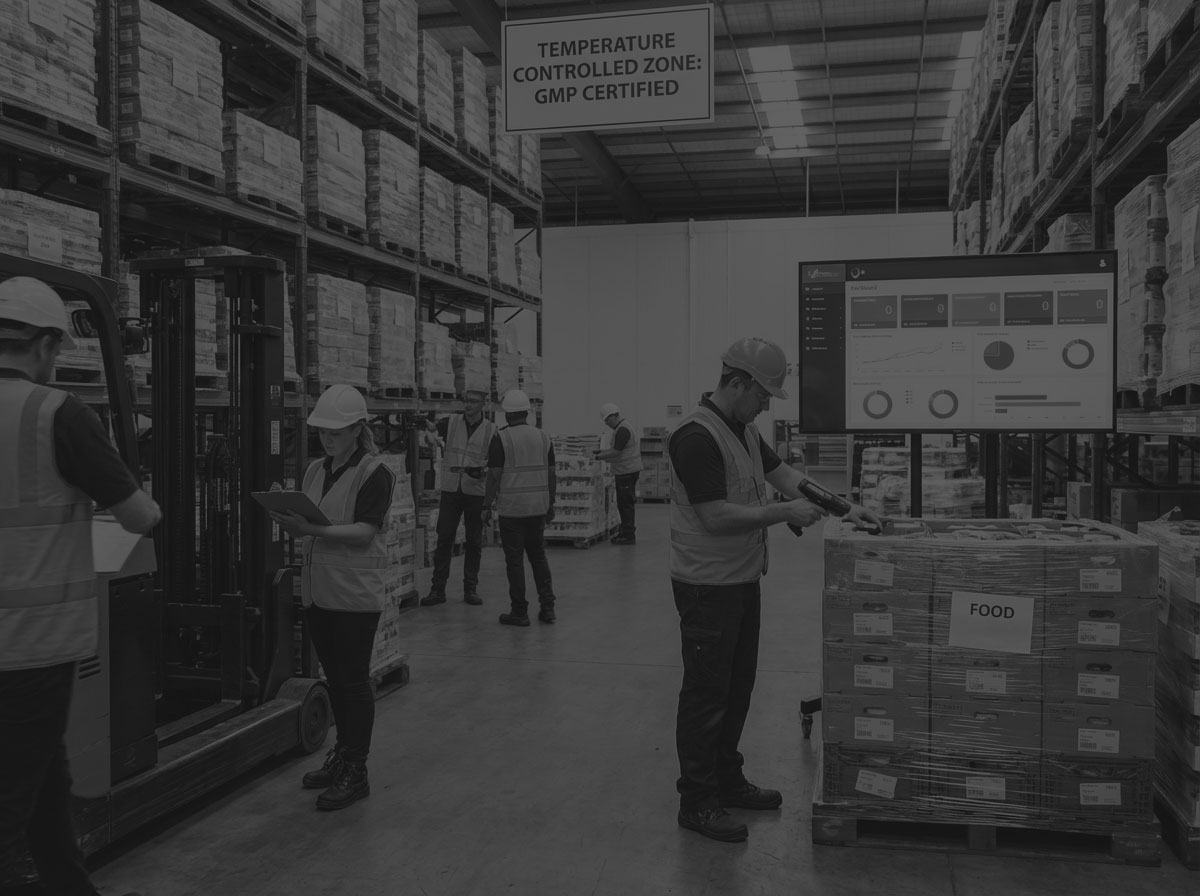The Benefits of a Warehouse Management System (WMS) for Mid-Sized Businesses.

Efficient warehouse management can be the key to unlocking higher productivity, lower costs, and streamlined operations. For mid-sized businesses, adopting a Warehouse Management System (WMS) is no longer a luxury but a necessity to remain competitive in an increasingly demanding marketplace.
This guide explores how a WMS can transform your operations, covering how it enhances inventory management, boosts efficiency, and integrates with broader systems to optimise your supply chain.
Key Takeaways:
- Real-Time Inventory Management: Reduce stockouts and optimise stock rotation with complete inventory visibility.
- Improved Operational Efficiency: Achieve seamless task management and reduce human errors through automation.
- Cost Savings: Minimise waste, lower labour costs, and reduce inventory holding expenses.
- Enhanced Traceability: Track materials accurately using lot, batch, or serial number systems.
- Seamless Integration: Connect your WMS with ERP and accounting tools for an automated, scalable solution.
- Support for Supply Chain Optimisation: Improve collaboration with suppliers and streamline the movement of goods.
Want more like this?
Download our free guide now.

Introduction to Warehouse Management Systems (WMS).
A Warehouse Management System (WMS) is software that helps businesses manage and control daily warehouse operations, from receiving goods to storing, picking, packing, and shipping. For mid-sized businesses with expanding inventories and limited resources, a WMS provides a scalable solution that ensures operational consistency and prepares your business for growth.
Why is a WMS Crucial for Mid-Sized Businesses?
Unlike large-scale enterprises, mid-sized businesses often have tighter budgets and fewer personnel. A WMS empowers these businesses by:
- Reducing manual errors.
- Providing real-time data for informed decision-making.
- Streamlining operations to maximise resource utilisation.
Now, let’s explore some of the main benefits of implementing a WMS for your business.

Improved Inventory Management.
At the core of any WMS is the ability to manage inventory with precision and efficiency. Here’s how it can help mid-sized businesses:
Real-Time Inventory Visibility
WMS provides real-time inventory tracking using barcodes, RFID systems, or QR codes. This allows you to:
- Monitor stock levels instantly.
- Reduce the risk of overstocking or stockouts.
- Enhance demand forecasting for better restocking decisions.
Stock Rotation and Optimisation
WMS systems make it easy to implement stock rotation methods such as FIFO (First-In, First-Out), LIFO (Last-In, First-Out), and FEFO (First-Expired, First-Out). These methods ensure:
- Fresh, perishable goods are used before they expire.
- Inventory is utilised in the most cost-effective and efficient way.
Centralised Management
With a WMS, all inventory data is centralised, making it easy to collaborate across teams and reduce miscommunication.

Increased Efficiency and Productivity.
Operational efficiency isn’t just about speed; it’s about doing things right the first time. A WMS supports this by optimising task management and reducing manual errors.
Warehouse Layout Optimisation
A WMS analyses your space to suggest optimal storage layouts. It helps arrange high-turnover products closer to packing stations, reducing travel time for employees and accelerating the picking and packing process.
Streamlined Task Management
By assigning tasks based on skill level, zone, or proximity, a WMS ensures your team works at maximum productivity. Labour forecasting tools embedded in WMS platforms can even plan schedules during peak demand.
Error Reduction
Automation within a WMS significantly decreases human errors. Features like barcode scanning and automated verification ensure accurate order fulfilment, which improves customer satisfaction.

Cost Reduction.
Reducing operational costs is critical for mid-sized businesses striving for scalability. A WMS achieves this in multiple ways.
Lower Inventory Holding Costs
Excess inventory ties up capital and occupies valuable warehouse space. A WMS ensures optimal stock levels, eliminating the need for excessive buffer stock.
Reduced Labour Costs
By automating repetitive tasks such as data entry and inventory tracking, a WMS lowers labour demand while improving accuracy. Employees can focus on high-impact tasks and deliver better results.
Minimise Waste
By facilitating efficient stock rotation and enabling accurate forecasting, WMS reduces expired and unsellable goods, minimising waste.
Enhanced Traceability and Visibility.
With increasing demand for sustainability and accountability, traceability is a must-have feature for any supply chain. A WMS delivers this effectively:
Trace Materials with Precision
Using lot, batch, and serial numbers, a WMS ensures complete traceability of every product. This is critical for industries like food, pharmaceuticals, and electronics where recalls or safety protocols must be adhered to.
Transparency Across Processes
From procurement to delivery, you get detailed insights into the movement of goods. This transparency limits redundancies and helps improve operational workflows.
Integration and Automation .
One of the standout features of a WMS is its ability to integrate seamlessly with other systems.
System Compatibility
WMS platforms can integrate with:
- ERP software like SAP or Microsoft Dynamics.
- Accounting software for real-time cost tracking.
- Transportation Management Systems (TMS) like Geo2 for optimised shipping.
Automation Capabilities
Modern WMS platforms also support automation technologies like robotics, pick-to-light systems, and conveyor belts. These reduce manual intervention, speeding up processes and leveraging AI to identify bottlenecks.

Supply Chain Optimisation.
A WMS doesn’t just benefit your warehouse; it enhances the entire supply chain.
Improved Collaboration
Share real-time data with your suppliers and distributors to improve coordination and avoid bottlenecks.
Faster Fulfilment
Enhanced order accuracy and shorter lead times mean customers get their shipments faster, boosting satisfaction and retention.
What to Know Before Implementing a WMS.
While the benefits are clear, implementing a WMS requires strategic planning:
- Assess Needs: Define key pain points in your warehouse operations.
- Choose the Right Partner: Consider reputable WMS providers like Balloon One, for tailored solutions.
- Train Your Team: Ensure your workforce understands how to use the WMS effectively.
- Set KPIs: Track metrics such as inventory accuracy, order cycle time, and labour efficiency to measure success.
Think Smarter, Work Better with a WMS.
For mid-sized businesses, a Warehouse Management System can be a game-changing investment. It not only modernises your warehouse operations but also positions your business as a future-ready enterprise.
If you’re considering implementing a WMS, partners like Balloon One, can offer expert advice and customised solutions tailored to your needs. Modernise your warehouse today and take the first step toward operational excellence. Contact us today for a free consultation.
Download our free guide now.

FAQs About WMS for Mid-Sized Businesses.
A WMS is software designed to streamline and optimise warehouse operations. It benefits mid-sized businesses by reducing manual processes, minimising costs, and improving productivity.
A WMS provides real-time inventory tracking, helping you monitor stock levels accurately and avoid overstocking or understocking.
Yes, most modern WMS solutions integrate seamlessly with ERP and accounting systems like SAP or QuickBooks to ensure streamlined operations.
The cost depends on the size of your business and the level of customisation. Typical ROI includes reduced labour costs, better inventory management, and higher order accuracy.
WMS systems associate each product with a unique identifier (lot, batch, or serial number), providing traceability from receipt to shipment.
A WMS optimises space utilisation and assigns tasks systematically to reduce travel time, improve pick accuracy, and minimise redundant work.
Cloud-based WMS solutions are generally more scalable and easier to update, making them ideal for growing businesses. On-premise options offer better control but may require more resources for maintenance.
Challenges include employee resistance to change, high initial costs, and data integration issues. Overcome these with proper training, a phased implementation approach, and expert guidance from WMS providers.





